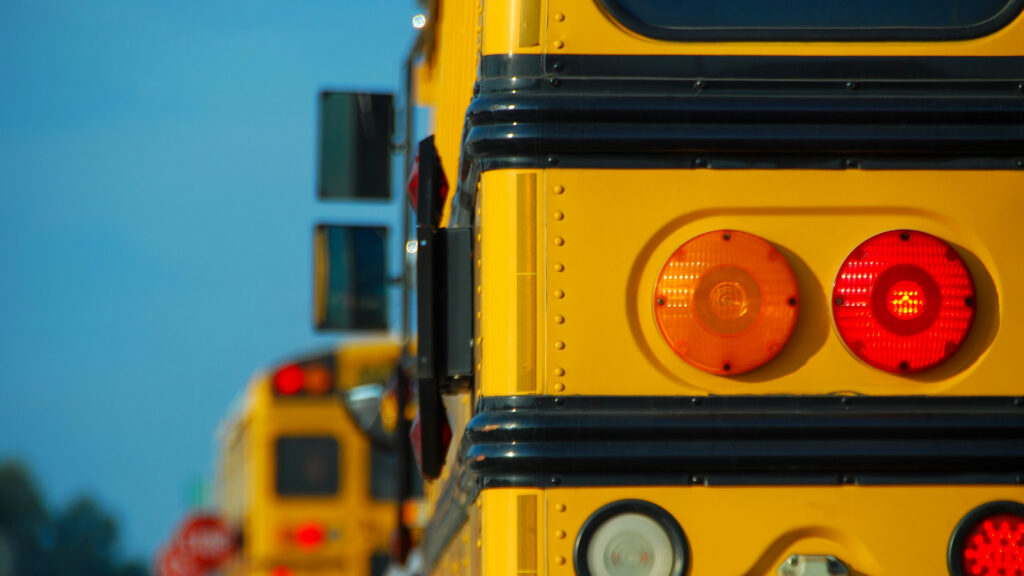National Alliance for Public Charter Schools | November 26, 2022
The National Alliance for Public Charter Schools released Changing Course: Public School Enrollment Shifts During the Pandemic, a new data analysis that examines enrollment trends during the last three school years (2019 – 2022). This report is a follow-up to the National Alliance’s 2021 major report, Voting With Their Feet, that analyzed student enrollment data during the first full year of the pandemic.
Three-year data shows that since the start of the pandemic, enrollment gains in charter schools held steady while enrollment losses in district public schools also remained constant. During the first full year of the pandemic, there was a large increase in charter enrollment (7%, or 240,000 students) and a large decrease in public district enrollment (3.5%, or nearly 1.5 million students). In the following school year, enrollment remained relatively flat for both types of schools with data indicating that most students who left their district schools in the first year of the pandemic did not return, even after schools reopened and in-person instruction resumed. The “adjustment” in enrollment that occurred during the pandemic that resulted in charter enrollment gains and district public school enrollment losses appears to be a “new normal,” instead of a temporary reaction to turbulent times.
First, parents voted with their feet by switching the type of school their children attend. And then they voted at the polls this fall. From coast to coast, a bipartisan roster of charter school supporters handily won elections for governor and seats in the U.S. Congress. While not every charter champion was victorious, it’s clear that supporting high-quality public school options boosted candidates’ appeal to parent voters and that charter schools will emerge on stronger footing.
“No matter how you examine the data, families from all walks of life are making different choices for their children since the pandemic began and many have chosen charter schools,” says Nina Rees, President and CEO of the National Alliance. “The pandemic shifted parent views towards education and motivated them to find better options for their children. Public charter schools were there for communities during this trying time, resulting in an ongoing increase of enrollment. We’re proud that these unique public schools continue to serve parent and student needs across the country.”
In an abundance of caution, the report examined the impact of population shifts on enrollment data, to be sure the growth or decline in student enrollment was not simply the result of families moving into or out of a state. In 34 out of 41 states, enrollment growth in charter schools outpaced state population trends. There were seven states (California, Hawaii, Illinois, Louisiana, Massachusetts, Utah, and Wyoming) where charter enrollment growth was less than school-aged student population growth. In all 41 states, enrollment growth in district public schools underperformed state population trends.
In addition to overall enrollment data, the National Alliance was able to collect data for White, Black, and Hispanic students in 25 of the 41 states in the analysis. Data indicate that White students drove district enrollment losses and Hispanic students bolstered charter growth. Sub-group summary findings include:
- More than 920,000 White students left district schools during the pandemic – nearly two-thirds of the total district school enrollment loss across all 41 states in the study. The number of White students enrolled in charter schools grew in 19 out of 25 states, while district public schools lost White students in 25 of 25 states.
- Black student enrollment in charter schools increased in 21 of 25 states while district public schools lost Black students in 21 of 25 states. 34,381 more Black students enrolled in charter schools during the pandemic (+5.08%), while 178,746 Black students left public district schools (−3.78%).
- The number of new Hispanic students enrolled in charter schools increased by 95,728 during the pandemic. That’s an 8.75% jump, meaning their growth outpaced overall charter school enrollment (7% nationally). District public schools lost 140,849 Hispanic students during the pandemic.
This report is based on the interim data available as of September 2022, analyzing data from the 41 states where charter schools exist and where enrollment data were available for three consecutive school years, from 2019–20 to 2021–22, by the time this report was written. This report does not include data for Alabama, Guam, Kansas, Puerto Rico, and Tennessee, or any states that do not have public charter schools. Each state educational agency releases enrollment data on its own time frame and there are sometimes slight variances in the particular types of data collected and reported. For example, some states are able to provide more detailed information about racial groups while others are not.
For more information, view Changing Course: Public School Enrollment Shifts During the Pandemic.
